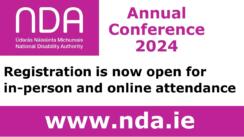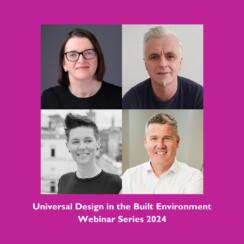-
Event
Recording now available - Understanding the European Accessibility Act (EAA) and decoding its Accessibility Requirements
-
Event

Tender for the completion of a ‘Universal Design Homes Cost Benefit Analysis Report’ open now
-
Event

Register for the 2024 Annual Conference
Promoting the participation of disabled people in cultural life, recreation, leisure and sport in Ireland – UNCRPD Article 30
-
Event

Universal Design in the Built Environment Webinar Series 2024
In partnership with the RIAI, we are hosting a series of four lunchtime webinars on Universal Design in the built environment.
-
Event
From compliance to excellence - using accessibility to create digital services for all
Date and time: Thursday June 27th 2024: 10.00 am -1:00 pm
-
Event
Launch of Universal Design Guidelines for Changing Places Toilets
NDA Hybrid Event
-
Event
Bus stop By-pass design - Online Webinar
Thursday 29th June 2023, 2:30 – 5:30, Online webinar,
-
Event
Webinar: Designing with Empathy: Universal Design Homes to benefit Everyone
Wednesday 14th June 2023, 12:30 - 13:30, Online via Zoom
